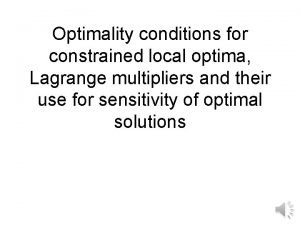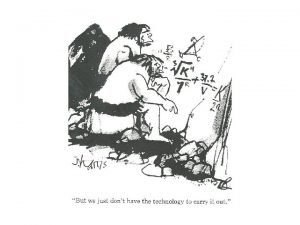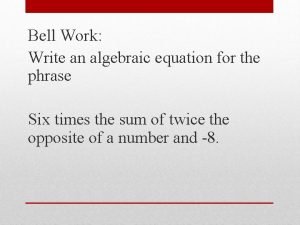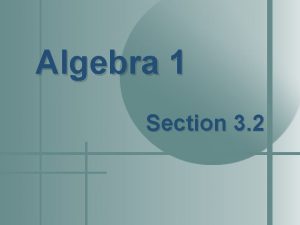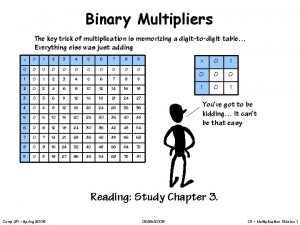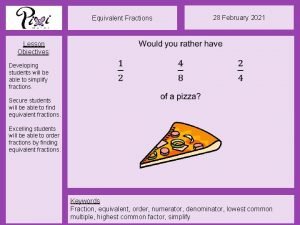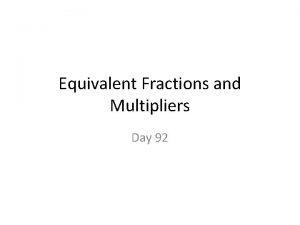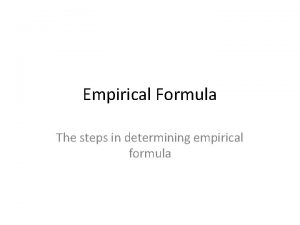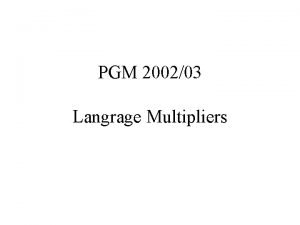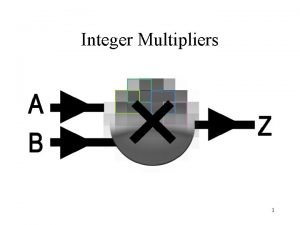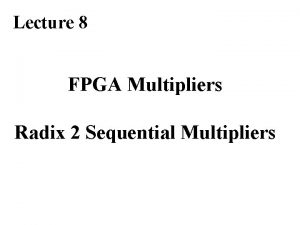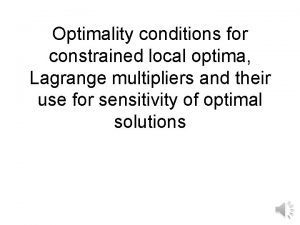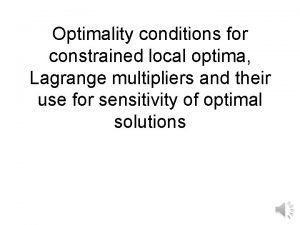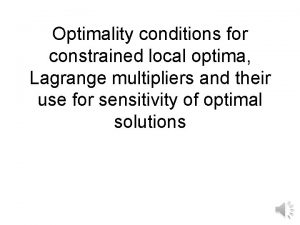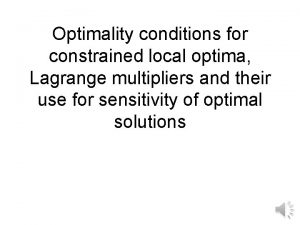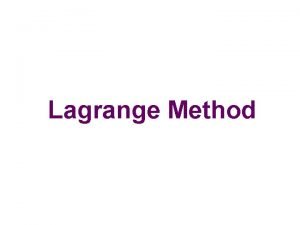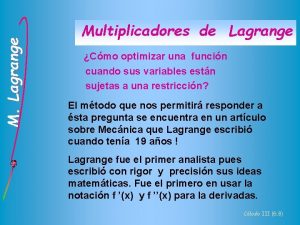Section 15 8 Lagrange Multipliers FREE EXTREMUM VERSUS











- Slides: 11

Section 15. 8. Lagrange Multipliers

FREE EXTREMUM VERSUS CONSTRAINED EXTREMUM PROBLEMS To find the minimum value of f (x, y, z) = x 2 + 2 y 2 + z 4 + 4 is a free extremum problem. To find the minimum of f (x, y, z) = x 2 + 2 y 2 + z 4 + 4 subject to the condition that x +3 y − z = 7 is a constrained extremum problem.

AN EXAMPLE Maximize the area of the rectangle inscribed inside the ellipse We want to maximize the function f (x, y) = 4 xy. NOTE: The function we are trying to optimize is called the objective function.

NOTES ON THE EXAMPLE 1. The maximum happens where a level curve of the objective function is tangent to the constraint curve. 2. If two curves are tangent, then their gradients are parallel.

THE EXAMPLE REPHRASED Maximize f (x, y) = 4 xy subject to the constraint g(x, y) = 1, where The objective function is maximized where the level curve and constraint curve are tangent. This happens when the gradients are parallel; that is, when where λ is a real number. The number λ is called a Lagrange multiplier.

METHOD OF LAGRANGE MULTIPLIERS To find the maximum and minimum values of f (x, y, z) subject to the constraint that g(x, y, z) = k [assuming that these extreme values exist and on the surface g(x, y, z) = k]: (a) Find all the values of x, y, z, and λ such that (b) Evaluate f at all the points (x, y, z) that result from step (a). The largest of these values is the maximum value of f ; the smallest is the minimum value of f.

THE METHOD OF LAGRANGE MULTIPLIERS WITH PARTIAL DERIVATIVES Step (a) in the Method of Lagrange Multipliers is equivalent to simultaneously solving the following system of equations:

EXAMPLES 1. Maximize f (x, y) = 4 xy subject to the constraint x 2/4 + y 2/9 = 1. 2. Minimize f (x, y, z) = x 2 + y 2 + z 2 subject to the constraint x + y + z = 1.

THE METHOD OF LAGRANGE MULTIPLIERS WITH TWO CONSTRAINTS To find the maximum and minimum values of f (x, y, z) subject to the constraints that g(x, y, z) = k and h(x, y, z) = c: (a) Find all the values of x, y, z, λ, and μ such that (b) Evaluate f at all the points (x, y, z) that result from step (a). The largest of these values is the maximum value of f ; the smallest is the minimum value of f.

THE PARTIAL DERIVATIVE FORM FOR TWO CONSTRAINTS

EXAMPLE Let T(x, y, z) = 20 + 2 x + 2 y + z 2 represent the temperature at each point on the sphere x 2 + y 2 + z 2 = 11. Find the extreme temperatures on the curve formed by the intersection of the plane x + y + z = 3 and the sphere.
 Lagrangian optimization
Lagrangian optimization Lagrange undetermined multipliers
Lagrange undetermined multipliers Percentage multipliers calculator
Percentage multipliers calculator Two unit multipliers
Two unit multipliers Unit multipliers
Unit multipliers Binary multipliers
Binary multipliers Unit 1 lesson 3 equivalent fractions and multipliers
Unit 1 lesson 3 equivalent fractions and multipliers Fraction chains
Fraction chains A 60 g sample of tetraethyl lead
A 60 g sample of tetraethyl lead Play magic multiplier
Play magic multiplier Introductory chemistry 5th edition nivaldo j. tro
Introductory chemistry 5th edition nivaldo j. tro Gibbs free energy equation
Gibbs free energy equation
